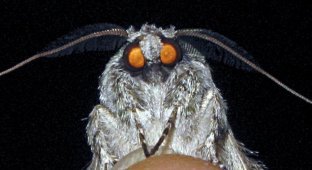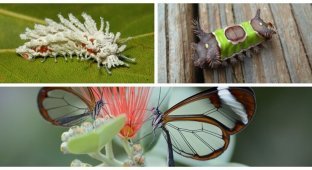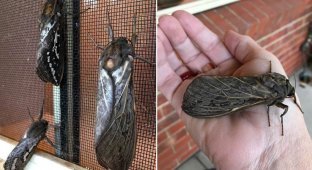Our hero today is a peaceful, nice butterfly, it doesn't bother anyone, it doesn't eat anything. But its children... But let's take things in order. 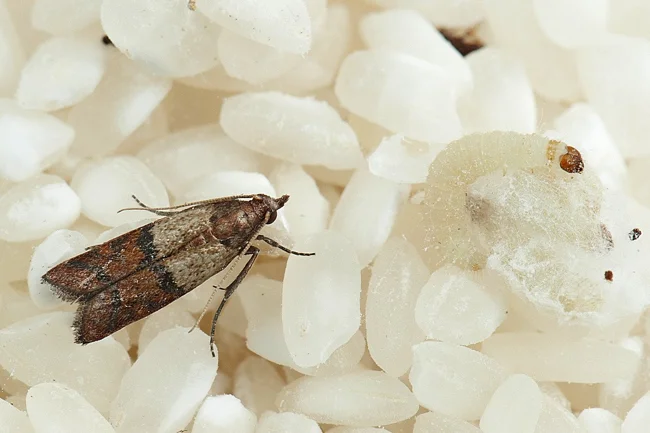
For example, you have a southern barn moth sitting on your wall, what are your options? That's right, you go look for food supplies, where its offspring are raging at this time. After all, if this insidious moth has sat down to rest, then before that it managed to work hard. By the way, it is most likely the mother moth that is sitting phlegmatically, and the father moth is circling frantically nearby - the male barn moths are much more active. 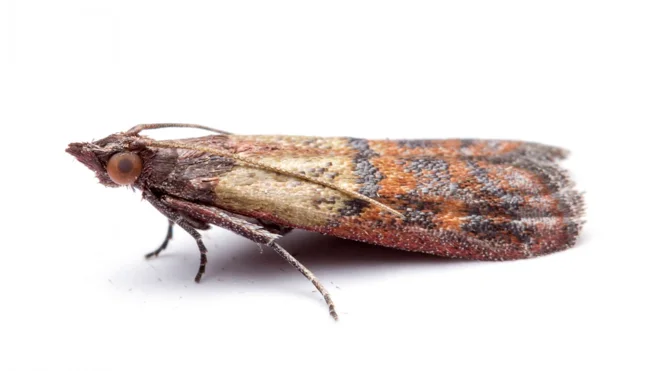
You've probably seen it, it lives all over the world, literally!
With a length of more than eight millimeters, the barn moth does not look very impressive. Well, let's say a nice beige "shawl" across the back and faded tiger stripes below, although in general it is not at all admirable. But do not be fooled about it, now we will add a little paranoia or healthy caution to you. The fire moth is also called the Indian moth, so our plot will involve dancing and elephants. 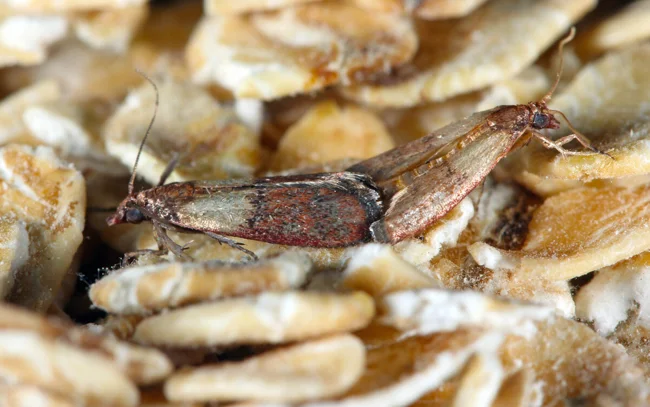
They mate peacefully on oatmeal. Anywhere, why put barriers to feelings!
So, grandma gave you a bag of dried apricots. Before that, the dried apricots had been lying in grandma's dresser for at least six months. And if during this time the contents of the bag simply dried out and went rancid, then you're lucky. But most often it is the blind old ladies who are fat and prosperous, moving in with their children and grandchildren with dried fruits and candies. One day, all the sweets in your house run out, and out of despair, you open the treasured bag, and there are strange cobwebs, holes, and something crawling around. 
During the larval stage, our heroes grow to a “crushing” 10-15 mm.
These are them, the larvae of the southern moth. Do you think it is enough to throw out the bag and bless the apartment so that this horror does not happen again? In vain you do so, now is the time to carefully check all the cereals, pasta, chocolates and nuts in the house. Because there is always a chance that you did not notice the previous sexually mature moths, and in front of you are their distant descendants. Oh, do not forget to check the spices, the beast is enough to be tempted even by chili. 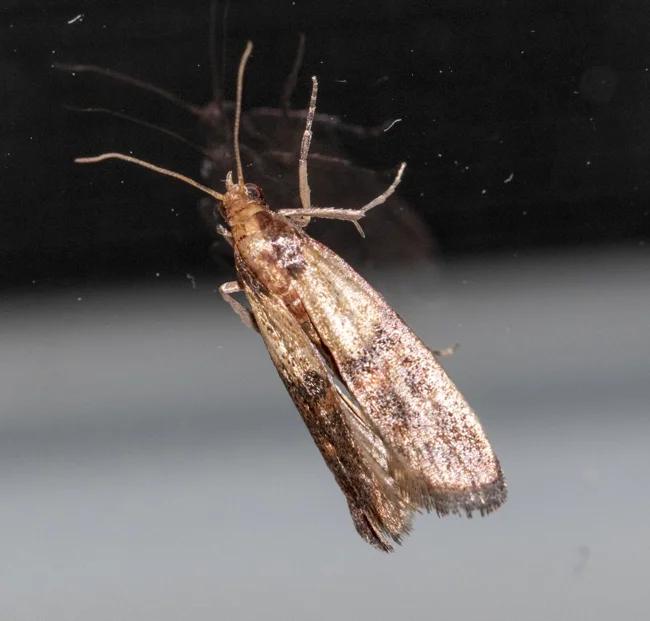
Goodbye planet Earth, I am going to eat other worlds!
The life cycle of the Indian moth depends greatly on the conditions. In a warm apartment with central heating, the larvae hatch from the eggs and soon begin their evil deed. They grope for a place to crawl or burrow into, and begin to feed non-stop, simultaneously building web passages in the substrate and leaving behind the products of their simple life activity. In a couple of months, the larvae will eat their sides, hide in cracks and pupate, so that in a week or two they can fly out into the world and immediately start a new reproduction cycle. 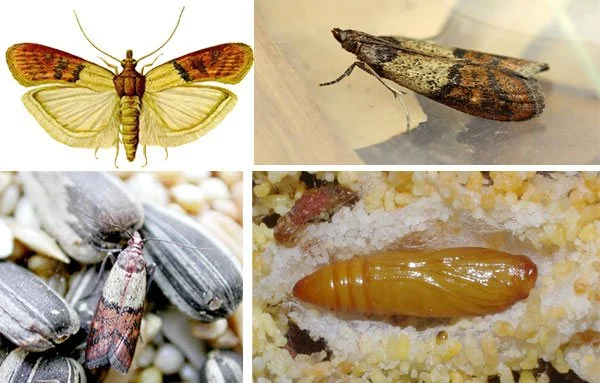
By the way, check the seeds too, the larvae often get inside.
And how did they even get out of the sealed bag of dried apricots into the world? They just gnawed through the polyethylene, no problem! These monsters can digest plastic, no joke. Well, not exactly they themselves, they just have a magical bunch of bacteria from the genera Enterobacter and Bacillus in their intestines. Now everyone is actively praising the son of my mother's friend, that is, the wax moth larva, for this great achievement, but in fact, the children of our today's heroes can do it too. Well, not as well, of course, but they can. 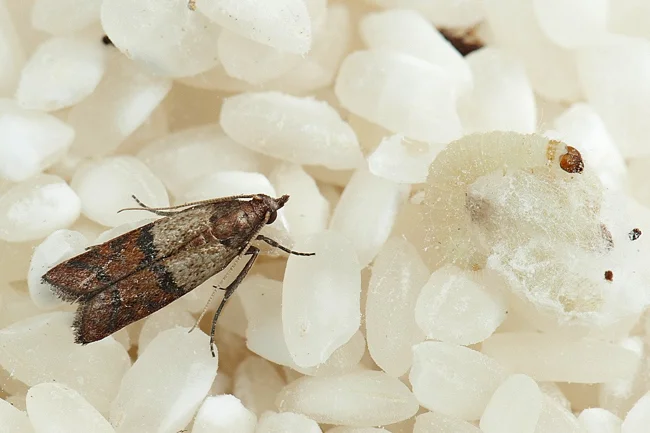
On rice cereal, the larvae are not particularly visible, as are the cobwebs, which is alarming.
Another question is that the wax moth is a more specialized animal and prefers, as the name suggests, wax-containing substances. Yes, there is something in polyethylene that attracts them. Let's not judge them, we ourselves sometimes eat rare crap. However, today we are not talking about the nightmare of all beekeepers, but about the nightmare of all food warehouses, factories and storage facilities.
Let's be glad that we do not have a store warehouse, but an apartment. But, by the way, do not immediately blame grandma for everything, it is quite possible that it was you who brought home a bag of corn grits with illegals inside. Number one in the piggy bank of paranoia: check cereals, flour, dried fruits and nuts when you bring them home. See short thin webs - throw them away out of sin. 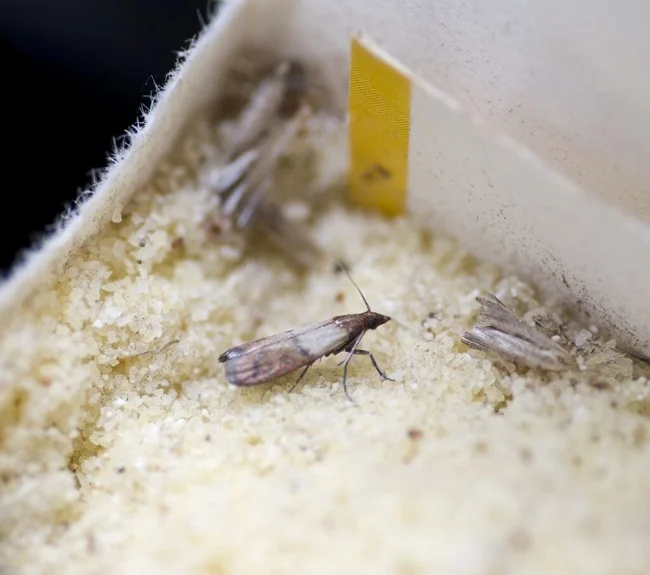
Sorry, these are not your supplies, but ours.
Because now there will be some really unpleasant news and number two in the piggy bank of fears. The barn moth is capable of causing not only banal rhinitis, conjunctivitis and dermatitis in people at any stage of its short life, but also allergies up to anaphylactic reactions, and also bronchopulmonary diseases up to asthma. Of course, dermatitis will occur if you swat a butterfly on the wall, and if the moths have firmly settled in the house... 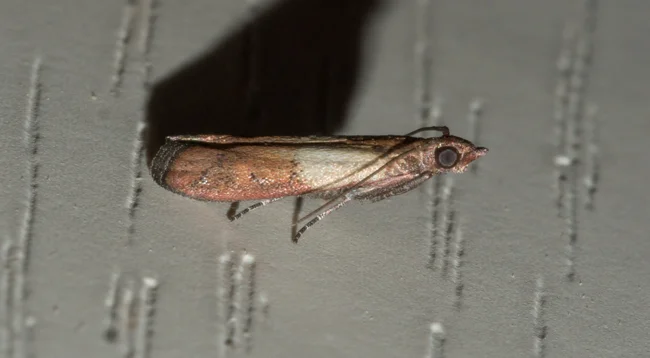
Don't hit me, I'm contagious.
In short, an ordinary small moth turned out to be that same inconspicuous dangerous maniac, we promised! If you see suspicious lumps in a jar of semolina, pour some onto a saucer and examine them carefully. Oh, and yes! Opaque jars and containers of cereals on the far shelf, how could we forget to mention them! Open them carefully. Very carefully. The author once opened a jar of corn grits at his grandmother's, and a squadron of imagos and an infantry of larvae rushed out at him. Don't do that, take care of yourself.
Add your comment
You might be interested in:














